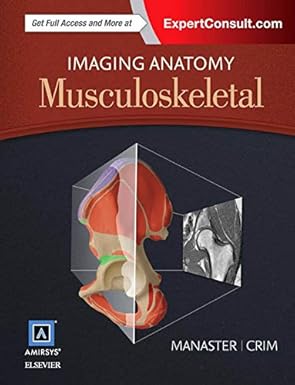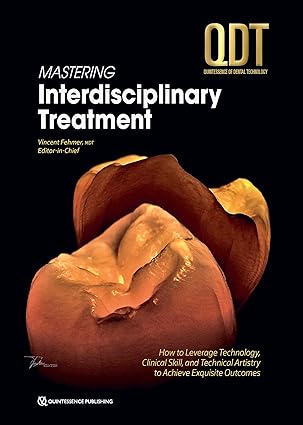Antibody Sequence and Structure Analyses Using IMGT®: 30 Years of Immunoinformatics Marie-Paule Lefranc and Ge ́ rard Lefranc Abstract IMGT®, the international ImMunoGeneTics information system®, http://www.imgt.org, the global ref- erence in immunogenetics and immunoinformatics, was created in 1989 by Marie-Paule Lefranc (Uni- versite ́ de Montpellier and CNRS) to manage the huge diversity of the antigen receptors, immunoglobulins (IG) or antibodies, and T cell receptors (TR) of the adaptive immune responses. The founding of IMGT® marked the advent of immunoinformatics, which emerged at the interface between immunogenetics and bioinformatics. IMGT® standardized analysis of the IG, TR, and major histocompatibility (MH) genes and proteins bridges the gap between sequences and three-dimensional (3D) structures, for all jawed verte- brates from fish to humans. This is achieved through the IMGT Scientific chart rules, based on the IMGT- ONTOLOGY axioms, and primarily CLASSIFICATION (IMGT gene and allele nomenclature) and NUMEROTATION (IMGT unique numbering and IMGT Colliers de Perles). IMGT® comprises seven databases (IMGT/LIGM-DB for nucleotide sequences, IMGT/GENE-DB for genes and alleles, etc.), 17 tools (IMGT/V-QUEST, IMGT/JunctionAnalysis, IMGT/HighV-QUEST for NGS, etc.), and more than 20,000 Web resources. In this chapter, the focus is on the tools for amino acid sequences per domain (IMGT/DomainGapAlign and IMGT/Collier-de-Perles), and on the databases for receptors (IMGT/ 2Dstructure-DB and IMGT/3D-structure-DB) described per receptor, chain, and domain and, for 3D, with contact analysis, paratope, and epitope. The IMGT/mAb-DB is the query interface for monoclonal antibodies (mAb), fusion proteins for immune applications (FPIA), composite proteins for clinical applica- tions (CPCA), and related proteins of interest (RPI) with links to IMGT® 2D and 3D databases and to the World Health Organization (WHO) International Nonproprietary Names (INN) program lists. The chapter includes the human IG allotypes and antibody engineered variants for effector properties used in the description of therapeutical mAb
چکیده فارسی
تجزیه و تحلیل ساختار و توالی آنتی بادی با استفاده از IMGT®: 30 سال ایمونو انفورماتیک ماری-پاول لفرانک و جی رارد لفرانک چکیده IMGT®، سیستم بین المللی اطلاعات ImMunoGeneTics®، http://www.imgt.org، مرجع جهانی erence در ایمونوژنتیک و ایمونو انفورماتیک، در سال 1989 توسط Marie-Paule Lefranc (دانشگاه de Montpellier و CNRS) برای مدیریت تنوع عظیم گیرنده های آنتی ژن، ایمونوگلوبولین ها (IG) یا آنتی بادی ها و گیرنده های سلول T (TR) ایجاد شد. پاسخ های ایمنی تطبیقی تأسیس IMGT® ظهور ایمونو انفورماتیک را نشان داد که در حد فاصل بین ایمونوژنتیک و بیوانفورماتیک ظاهر شد. تجزیه و تحلیل استاندارد IMGT از ژنها و پروتئینهای IG، TR و سازگاری بافتی اصلی (MH) شکاف بین توالیها و ساختارهای سهبعدی (3D) را برای همه مهرهداران فکدار از ماهی تا انسان پر میکند. این امر از طریق قوانین نمودار علمی IMGT، بر اساس بدیهیات IMGT- ONTOLOGY، و در درجه اول طبقه بندی (ژن IMGT و نامگذاری آلل) و NUMEROTATION (شماره گذاری منحصر به فرد IMGT و IMGT Colliers de Perles) به دست می آید. IMGT® شامل هفت پایگاه داده (IMGT/LIGM-DB برای توالی های نوکلئوتیدی، IMGT/GENE-DB برای ژن ها و آلل ها و غیره)، 17 ابزار (IMGT/V-QUEST، IMGT/JunctionAnalysis، IMGT/HighV-QUEST برای IMGT/HighV-QUEST برای IMGT است. و غیره) و بیش از 20000 منبع وب. در این فصل، تمرکز بر ابزارهای توالی اسیدهای آمینه در هر دامنه (IMGT/DomainGapAlign و IMGT/Collier-de-Perles) و بر روی پایگاه های داده گیرنده ها (IMGT/ 2Dstructure-DB و IMGT/3D-structure-DB) است. ) در هر گیرنده، زنجیره، و دامنه و برای سه بعدی، با تجزیه و تحلیل تماس، پاراتوپ و اپی توپ توصیف شده است. IMGT/mAb-DB رابط پرس و جو برای آنتی بادی های مونوکلونال (mAb)، پروتئین های فیوژن برای کاربردهای ایمنی (FPIA)، پروتئین های ترکیبی برای کاربردهای بالینی (CPCA) و پروتئین های مورد علاقه مرتبط (RPI) با پیوند به IMGT® است. پایگاههای اطلاعاتی دوبعدی و سه بعدی و فهرست برنامههای سازمان جهانی بهداشت (WHO) نامهای غیر اختصاصی بینالمللی (INN). این فصل شامل آلوتیپهای IG انسانی و انواع مهندسیشده آنتیبادی برای خواص مؤثر مورد استفاده در توصیف mAb درمانی است
ادامه ...
بستن ...
IG and TR chains [3, 4] and more particularly of their variable domains (V-DOMAIN) which, at their N-terminal end, recognize and bind the antigens [2] (Fig. 2). The IG and TR synthesis includes several unique mechanisms that occur at the DNA level: combinatorial rearrangements of the V, D, and J genes that code the V-DOMAIN [the V–(D)–J being spliced to the C gene that encodes the C-REGION in the transcript]; exonuclease trimming at the ends of the V, D, and J genes; and random addition of nucleotides by the terminal deoxynucleotidyl transferase (TdT) (DNTT, DNA nucleotidylexotransferase) that creates the junc- tional N-diversity regions, and later during B cell differentiation, for the IG, somatic hypermutations, and class or subclass switch [3, 4] (Fig. 1). Antibody and IMGT®: 30 Years of Immunoinformatics 5 Fig. 2 Variable VH and VL domains of an immunoglobulin antigen binding site (With permission from M-P. Lefranc and G. Lefranc, LIGM, Founders and Authors of IMGT®, the international ImMunoGeneTics information system®, http://www. imgt.org [1]) 2 IMGT-ONTOLOGY and IMGT Scientific Chart Rules The first IMGT® breakthrough has been the IMGT gene and allele nomenclature for IG and TR [2–32], which allowed genes and data of the complex and highly diversified adaptive immune responses to be managed in genomic databases and tools. The second IMGT® breakthrough has been the IMGT unique numbering [33–40] and the IMGT Collier de Perles [41–47]. These breakthroughs have been formalized as concepts of classification (see Subheading 4) and con- cepts of numerotation (see Subheading 5) and have led to the imple- mentation of IMGT-ONTOLOGY [48–61] with seven axioms: IDENTIFICATION, CLASSIFICATION, DESCRIPTION, NUMEROTATION, LOCALIZATION, ORIENTATION, and OBTENTION (Fig. 3).
ادامه ...
بستن ...










